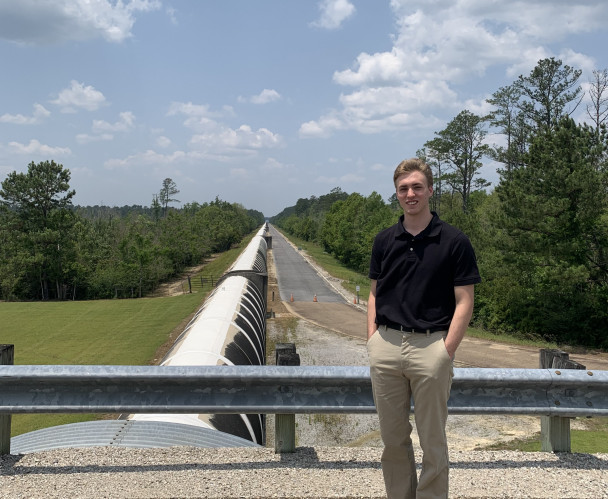
Interested in studying intergalactic spacetime wiggles? You’ve come to the right place.

Carthage students have the rare opportunity to study gravitational waves under the tutelage of Jean Quashnock, professor of physics and astronomy.

The students examine the gravitational waves that originate from the merging of black holes and neutron stars. Gravitational waves are “ripples” in the fabric of spacetime, as described by Einstein’s general theory of relativity, and their detection allows observatories to analyze the merging of these objects.
We still don’t fully understand the nature of gravity, so the detection and study of gravitational waves allows scientists to experimentally test predictions made by the theory of general relativity that attempts to describe it.
The students perform their own research using the data collected from a global network of gravitational wave detectors and have displayed their findings during the Celebration of Scholars, SURE presentations, and more.

Accepted into a Research Experience for Undergraduates (REU) program at Louisiana State University for the summer, Andrew used the skills gained from the gravitational waves group at Carthage to learn more about the field. On Fridays, he did his summer research on-site at the Laser Interferometer Gravitational-Wave Observatory (LIGO) laboratory in Livingston, Louisiana — an observatory the Carthage group gathers data from.

Furthermore, Kaitlyn was similarly accepted into a Physics REU program at the Grainger College of Engineering at the University of Illinois Urbana-Champaign. The program is highly competitive as it is grant-based and funded by the National Science Foundation, and she was specifically chosen due to her work with the research group at Carthage.
While only there over the summer, Kaitlyn impressed the advisor so much that she was invited to apply for their PhD program, as well as help continue to work on a paper that may be published in the future.
Both Andrew and Kaitlyn were better prepared for their experiences outside of Carthage as a direct outcome of their research as a part of this group. The students involved are not limited to the Physics Department, as Reece is a double major in mathematics and data science.
Kaitlyn states that her favorite part about the group at Carthage is that “each year the subject of the research changes, giving students the opportunity to explore different subfields relating to gravitational waves.”
This year, the group is studying black hole and neutron star mergers as cataloged in the latest data release from the network of gravitational wave detectors.
To learn more, please contact Prof. Quashnock at jquashnock@carthage.edu.
